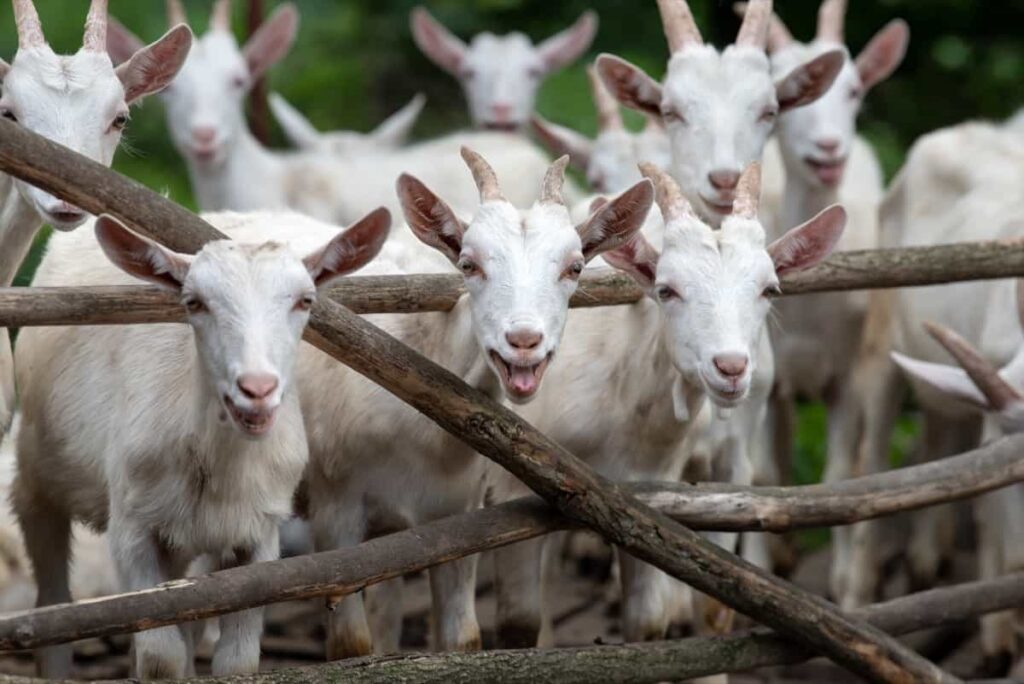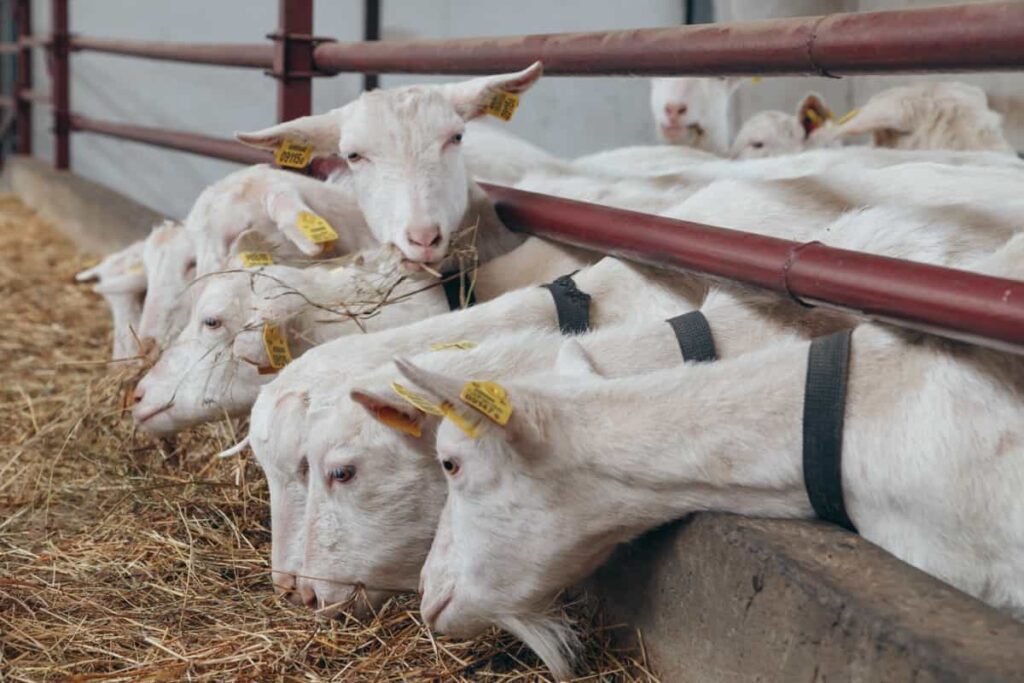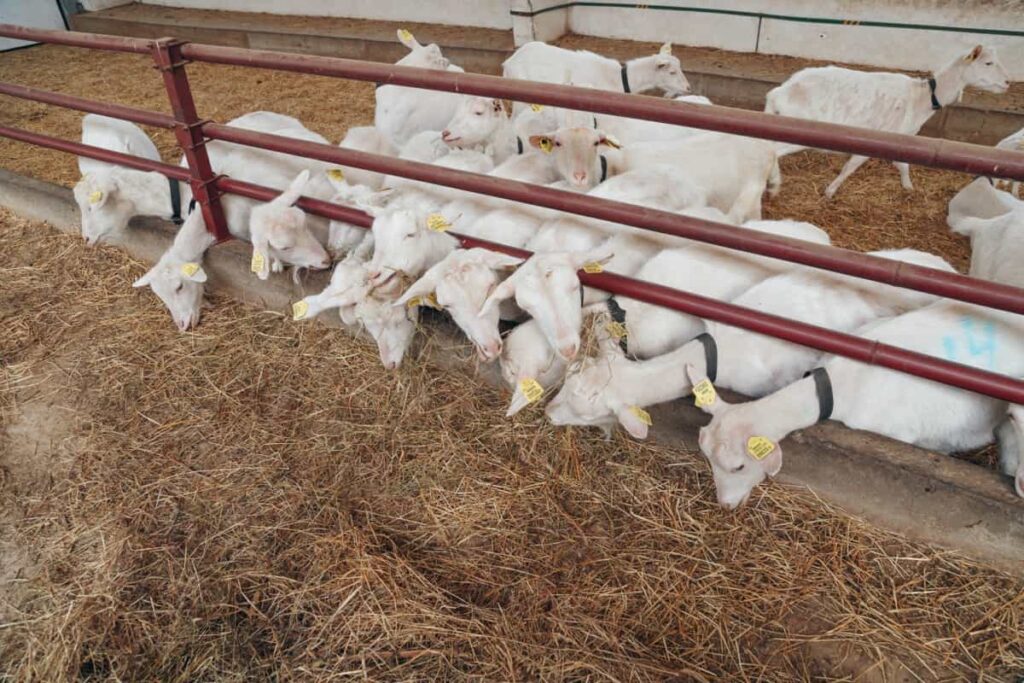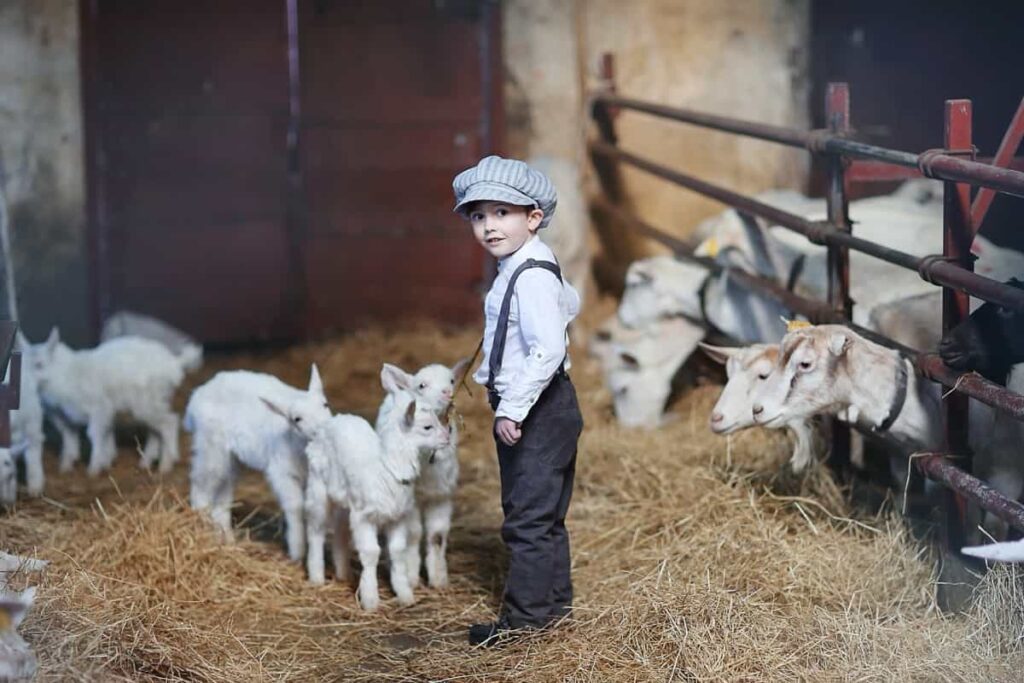Iran has a long history of goat farming, with goats playing a significant role in the country’s agricultural sector. In nomadic and rural households, goats are primarily bred for meat, milk, fiber, and skin supply. Goat farming in Iran has immense profit potential, thanks to the high demand for goat meat, milk, and other products. Starting goat farming in Iran helps promote food security. There has been an increased focus on improving breed selection and genetics within the Iranian goat farming industry.

10 Steps to Start Goat Farming in Iran
Developing a Comprehensive Business Plan for Goat Farming in Iran
It is crucial for the success of your goat farming venture in Iran. Determine your goal with your goat farm and outline the steps required to get there. Consider factors such as the size of your operation, target market, and financial projections. Next, conduct market research to understand the demand for goat products in Iran.
When developing a business plan for goat farming in Iran, it’s important to consider the costs involved. Calculate land acquisition or lease expenses, infrastructure setup, purchasing goats, feed supplies, veterinary care, labor costs, and marketing activities. Additionally, think about how you will manage day-to-day operations on your farm. Outline tasks such as feeding schedules, breeding programs, disease management protocols, and record-keeping practices.
Acquiring Suitable Land and Infrastructure for Goat Farming in Iran
Goats require enough space to graze and roam around comfortably. Additionally, having the right infrastructure ensures that your goats are kept safe and healthy. The land size will depend on the number of goats you plan to have. Having at least half an acre per 10-15 goats is recommended. Water supply is another essential aspect when setting up your goat farm.
Best Breeds to Start Goat Farming in Iran
The Bakhtiari black goat breed stands out as one of the most popular choices among farmers in Iran. These goats are known for their adaptability to various environmental conditions and ability to produce high-quality meat. Other notable goat breeds suitable for farming in Iran include Markhoz, Cashmere, Mohair, Najdi, Tali, Adani, Najdi, and Naini. Each breed has unique characteristics and advantages depending on your specific goals as a farmer.
In case you missed it: 10 Steps to Start Goat Farming in Mexico: Business Plan, License, Cost, and Profit Details

Establishing a Goat Breeding Program in Iran
A well-planned and executed breeding program will ensure the production of healthy and high-quality goats. To begin with, you need to carefully select the breeds most suitable for your specific farming goals. Once you have chosen the right breeds, it’s important to maintain genetic diversity within your herd.
Another essential aspect of establishing a successful breeding program is proper record-keeping. Furthermore, implementing sound breeding practices such as artificial insemination or natural mating techniques should be part of your strategy. These methods allow you greater control over genetic selection while maximizing reproductive efficiency within your herd.
Feeding and Nutrition Practices for Goats in Iran
Goats are ruminant animals, so their digestive system is designed to process plant material efficiently. In Iran, goats are predominantly fed on natural pastures, shrubs, and tree leaves that are abundant in the country’s diverse landscapes. Goats’ diet also includes agricultural by-products such as wheat bran, rice bran, and corn silage. Iranian goat farmers must monitor the quality and quantity of feed given to their goats.
Disease Management in Your Goat Farm in Iran
The main step in disease management is maintaining proper hygiene and cleanliness on the farm. Regularly cleaning and disinfecting barns, equipment, and feeding areas can help prevent the spread of pathogens. Another important aspect is monitoring the health of your goats closely. Vaccinations are also an essential part of disease prevention. Implementing biosecurity measures is another vital component in managing diseases on your goat farm.
Securing the Necessary Licenses and Permits for Goat Farming in Iran
To begin, you must visit the local agricultural department or relevant authorities to inquire about the specific licenses and permits required for goat farming in Iran. It’s important to note that different regions may have slightly different requirements, so it’s essential to follow the guidelines by your local authorities.
Some common licenses and permits required include a livestock permit, environmental clearance certificate, land use permit, and water usage permit. You may need to comply with health and safety regulations related to animal welfare, waste management, and biosecurity measures. This could involve obtaining veterinary certificates for your goats’ health status and implementing proper hygiene practices on your farm.
Market Research and Feasibility Study for Goat Farming in Iran
To begin your market research, gather information about the demand for goat products such as meat, milk, and fiber in different regions of Iran. Identify potential customers like local markets, restaurants, hotels, or export opportunities. Another aspect to consider during your feasibility study is the available resources required for goat farming. Evaluate factors such as land availability, water supply, access to veterinary services, and availability of skilled labor.
In case you missed it: Essential Goat Farming Equipment and Tools for Goat Farm Operations

Marketing and Selling Your Goat Products in Iran
Understanding the demand for different goat products in Iran is a key aspect of marketing. You can tap into this demand by promoting the quality and taste of your goat meat through various channels such as social media, local markets, and restaurants. In addition to meat, other valuable goat products include milk, fiber, and skin. These products have their niche markets that you can explore. To expand your customer base further, consider exporting your high-quality goat products internationally.
Cost and Investment to Start a Goat Farm in Iran
Cost and investment are essential considerations for starting a goat farm in Iran. The initial expenses will depend on various factors, such as the size of your farm, the number of goats you intend to raise, and the type of infrastructure required. To start a small-scale goat farm in Iran, you can expect to invest around 10-15 million Iranian Rials (IRR) per goat. This includes expenses for purchasing land, constructing shelters, buying goats, feed costs, veterinary care, and other necessary equipment.
Summary of Goat Farming in Iran
| Steps | Description |
| Conduct Business plan | Understand the size of your operation, target market, and financial projections. |
| Land and Infrastructure | Adequate facilities like shelters, fences, feeding areas, and water sources for your goats. |
| Market Research | Understand the demand for goat products in Iran. |
| Feasibility Study | Starting a goat farm in a location by assessing factors such as climate, availability of resources, and competition |
| Best Breeds | Please choose the right breed based on their adaptability to Iranian climatic conditions. |
| Goat Breeding Program | Ensure healthy offspring with desirable traits such as high milk yield or fast growth rate. |
| Feeding Practices | Using locally available feed resources supplemented with nutritious feeds |
| Licenses and Permits | Required by local authorities to legally operate a goat farm in Iran |
| Disease Management | Prevention measures like regular vaccinations, proper hygiene practices, etc., to keep the herd healthy |
| Marketing | Through various marketing channels like social media platforms or local advertisements to attract customers |
How Profitable Is Goat Farming in Iran?
Goat farming in Iran can be highly profitable for those willing to invest time and effort. With a growing demand for goat products such as milk, meat, and fiber, this industry has ample opportunity to make a substantial income. It has great potential for profitability due to low production costs, high reproductive rates of goats, and strong market demand for various goat products, including meat, milk, fiber, etc.
Frequently Asked Questions on Goat Farming in Iran
What are the Benefits of Starting Goat Farming in Iran?
Starting a goat farm is profitable due to the high demand for goat products such as meat, milk, and fiber. Goats are resilient animals that adapt well to different climates and terrains across Iran. Additionally, goat farming provides employment opportunities and contributes to the rural economy.
In case you missed it: 6 Best Herbal Remedies for Goat Coughing and Sneezing

Is a Specific License or Permit Required for Starting a Goat Farm in Iran?
Like any other agricultural business, you must obtain the necessary licenses and permits from local authorities before setting up your goat farm in Iran. These licenses ensure compliance with regulations related to animal welfare, biosecurity measures, and environmental protection.
Which Breeds of Goats Are Suitable for Farming in Iran?
Iran has several indigenous breeds that are well-suited for its climate and terrain. Popular breeds include Markhoz, Najdi, Taleshi, Khalkhali, and Naini.
How Can I Manage Diseases Effectively on My Goat Farm?
Implementing proper biosecurity measures such as vaccination programs and regular veterinary check-ups are crucial preventive steps against common diseases affecting goats.
Conclusion
Goat farming has gained significant importance in Iran over the years. It is crucial in the country’s agricultural sector and rural economy. The importance of starting goat farming in Iran cannot be overstated, as it offers many benefits to farmers and the overall community. Goat farming in Iran provides a sustainable source of income for farmers. With proper planning and management, goat farming can generate substantial profits by selling meat, milk, fiber, and skin products.
- Types of Grass Growing for Goat Farm
- How to Train Goats for Milking: A Beginners Guide
- Goat Milking Practices and Equipment: A Beginner’s Guide
- Goat Farming for Fiber: Producing Mohair and Cashmere
- Maximizing Goat Milk Production: Tips for Dairy Goat Farmers
- Goat Farming as a Family Business: Strategies for Success
- Profitable Kenya Goat Breeds for Commercial Dairy and Meat Business
- Unlock the Secrets of Oberhasli Goat: Discover Raising and Management Practices
- Ultimate Guide to Myotonic Goats: Explore Profile to Raising